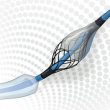Patients with aortic stenosis and extreme surgical risk have extremely high mortality due to known comorbidities. The short-term benefit of transcatheter aortic valve replacement (TAVR) with self-expanding valve is clear, and it warrants the procedure in this challenging population. While elderly patients with comorbidities who are at extreme surgical risk might be eligible for TAVR,...
Silent Embolism during TAVR: Just Images or Potential Cognitive Deterioration?
Finding new cerebral ischemic imaging after transcatheter aortic valve replacement (TAVR) is almost the rule, especially for self-expandable valves. These images might disappear over the months but, unfortunately, they are associated to small but significative cognitive deterioration. Most patients undergoing TAVR develop silent cerebral ischemic lesions (SCILs) that show in magnetic resonance imaging (MRI). The...
Differences in American and European Atrial Fibrillation Guidelines
The recent publication of the European Society of Cardiology (ESC) and the American College of Cardiology (ACC) guidelines provided an important update on multiple aspects of the management of atrial fibrillation (AF). However, these guidelines differ in terms of management and recommendation levels. As it might be expected, most differences arose in intermediate cases—both guidelines...
ACC 2021 | LAAOS III: Appendage Closure During Central Vascular Surgery
According to the LAAOS III study, presented at the American College of Cardiology (ACC) 2021 Congress and simultaneously published in the New England Journal of Medicine (NEJM), patients with atrial fibrillation who undergo central vascular surgery for any other indication find benefit in appendage closure during said surgery. Using oral anticoagulation agents, patients undergoing appendage closure...
Can We Deal with Learning Curves in Acute Stroke?
When an interventional cardiology center, where interventional cardiology specialists work alongside neurologists and radiologists, start a thrombectomy program in acute stroke, results achieved are similar to those at an interventional neurology center. Mechanical thrombectomy has proven to be the best treatment option for acute ischemic stroke. However, it is not widely available, mainly due to...
The Key to Treating Stroke: Knowing When to Stop
With endovascular therapy as the standard of care in ischemic stroke and with a community of interventional cardiologists increasingly committed to assisting neurologists in providing 24/7 thrombectomy, staying informed is paramount. The number of thrombectomy attempts with retractable stent (>3) is associated with hemorrhagic transformation beyond age, baseline NIHSS (National Institutes of Health Stroke Scale)...
Diagnosis and Treatment of Vaccine-Induced Thrombosis
Cerebral venous sinus thrombosis is an extremely rare manifestation of cerebrovascular disease. In the last few days, this pathology has sadly gained fame due to its association with two vector-based vaccines against SARR COV19. These are Ad26.COV2.S (Johnson & Johnson) and ChAdOx1 nCoV-19 (AstraZeneca). There have not been any reports of thrombosis or thrombocytopenia from...
Single or Dual Antiplatelet Therapy in Stroke or Transient Ischemic Attack?
Antiplatelet therapy is key to prevent thrombotic events after a transient ischemic attack (TIA) or ischemic stroke. The role of aspirin is well established in this scenario, but there is emerging evidence for a short period of dual antiplatelet therapy (DAPT). Now, can this strategy avoid recurrent strokes without paying a price in terms of...
Silent Stroke During TAVR and Early Cognitive Impairment
Silent stroke is common after transcatheter aortic valve replacement (TAVR). Co-morbidities such as diabetes or chronic renal failure, as well as procedural factors such as pre-dilation, increase the risk of silent stroke. While many events of silent stroke have an early effect on cognition, it is necessary to learn whether the impairment is sustained over...
Diastolic Pressure Could Play a Dirty Trick on Patients Treated for Hypertension
Having too low diastolic pressure could be linked to an increase in cardiovascular events (J-shape phenomenon). However, current guidelines suggest a target blood pressure under 130/80 mmHg with no lower limit for diastolic pressure. This paper, recently published in JAMA, sought to evaluate the J-shape phenomenon of diastolic pressure in treated patients who reached a target...









